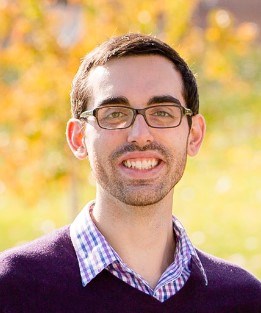Medical Physics Seminar – Monday, April 24, 2017
Cardiac Chamber Mapping via C-arm CT with a Scanning-Beam Digital X-ray system

Jordan Slagowski (student of Dr. Michael Speidel)
Research Assistant, Department of Medical Physics, UW-School of Medicine & Public Health, Madison, WI - USA
Computed tomography(CT)-derived 3D anatomic roadmaps may be integrated with SBDX real-time catheter tracking to facilitate catheter navigation to anatomic targets within cardiac chambers. In-traprocedural acquisition of the roadmap may avoid potential inaccuracies of pre-procedure imaging, such as changes in organ size and location, or patient positioning between the time of pre-procedure imaging and intervention. This talk presents the development of a C-arm CT imaging capability for the SBDX fluoroscopic system. Data is acquired by C-arm rotation and simultaneous x-ray source scanning. A reconstruction technique based on the prior image constrained compressed sensing (PICCS) algorithm was developed to provide ECG-gated CT images from truncated field-of-view acquisitions with a slow-rotating C-arm (13.4 s). A novel single-view geometric calibration method was developed to account for non-ideal C-arm rotation. Segmentation accuracy from SBDX CT images of cardiac chamber phantoms will be presented. Results from a recent animal study will also be shown.
Real-time 3D catheter tracking using Scanning-Beam Digital X-ray (SBDX) tomosynthesis

David Dunkerley (student of Dr. Michael Speidel)
Research Assistant, Department of Medical Physics, UW-School of Medicine & Public Health, Madison, WI - USA
Conventional 2D x-ray fluoroscopy provides limited guidance in cardiac interventional procedures that require the navigation of catheter devices inside relatively large 3D chambers, in part due to the lack of depth resolution. Scanning-beam digital x-ray (SBDX) is an “inverse geometry†fluoroscopy technology consisting of a large-area multi-source x-ray tube, small photon counting detector array, and a real-time image reconstructor. This unique system design enables depth-resolved tomosynthesis at fluoroscopic frame rates. This talk presents the development and evaluation of a real-time 3D catheter tracking plat-form based on the tomosynthesis capability of SBDX. SBDX tomosynthesis is performed at 32 planes x 15 frame/s. For each image frame, high contrast catheter elements are localized in 3D based on analy-sis of blurring versus plane position. A real-time (15 frame/s) implementation of tracking will be pre-sented, including visualization of tracking results relative to a pre-acquired 3D cardiac chamber map and real-time fluoroscopy. Additional methods of performing dose reduced 3D catheter tracking with SBDX will be discussed.